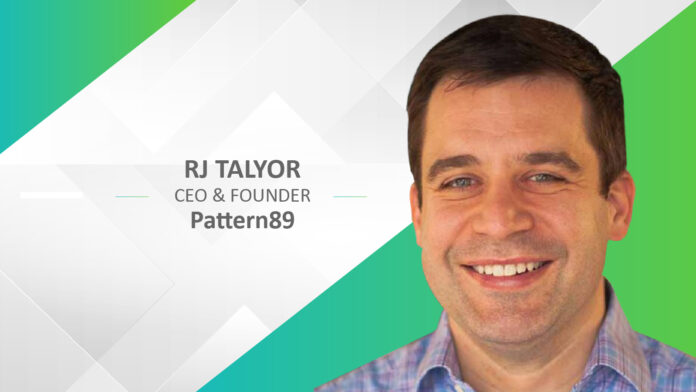TCMO Bureau: What creative dimensions of an advertisement, such as imagery, colors, and copy, will have the highest performance on social media platforms?
RJ Talyor: At Pattern89, we capture over 49,000 dimensions of an advertisement to guide decisions. That’s a number significant enough to make even the most seasoned marketer’s head spin, so thankfully, AI handles the bulk of the work. Rather than go line-by-line through the thousands of possibilities, I believe marketers should prioritize dimensions like lifecycle length, copywriting, topical imagery, and ad set-up.
Here’s an example: The ad creative for seasonal drinks at Starbucks lasts about 40 days to make this more real. That’s close to the 36-day average; but, this varies slightly by industry. For B2B ad creative, it’s shorter at 23 days.
If an organization is running a B2B ad, they’ve got just over three weeks of material. Visuals like a TV, the spa, a toy, fishing, or reading are trending down in cost-per-click (CPC), potentially saving the company some budget. It is necessary to mine the harvested data to find the call-to-action (CTA) that works best, which I’ll share more about later.
Read More: Factors Responsible for Sabotaging the B2B Marketing Budget
So if information around what’s trending upward, such as a collection of ads, rather than a carousel, works best; video, rather than an image performs better; and, using Facebook rather than Instagram as the platform to engage with prospects, read on for more insights.
Granted, no industry can go off of a single recommendation, so marketers are encouraged to investigate the full data report for guidance.
TCMO Bureau: How does AI supplement the work of marketers and improves the results?
RJ Talyor: There are no discounting marketers who are smart people. 2020 has proven this repeatedly: each month, there seems to be a new challenge, and I’ve witnessed scenarios where teams rise to the occasion to create something as impactful as it is beautiful.
But everyone has felt the “creative block” that comes with brainstorming or developing a project – this is because the marketing world still vastly relies on intuition, and sometimes the creative well can run dry. Artificial intelligence doesn’t face the fatigue or uncertainty around whether an ad will work.
The data isn’t handling all of the emotions inputted, giving pure recommendations that remove human uncertainty. AI predicts what works – removing the guesswork and generating results.
Marketers like Chip House, CMO at SharpSpring, have found this to be true. House shares, “Marketers need to develop content that converts, which is why tools like Pattern89 are critical. But it’s also critical to make sure opportunities don’t slip through the cracks while you’re focusing on the top of the funnel. Marketing automation optimizes the entire funnel, so those valuable conversions ultimately turn into sales and real revenue.”
TCMO Bureau: What are the most effective calls to action?
RJ Talyor: The audience may be seeing “Learn More” as a common CTA on Facebook and Instagram. While this is effective, with a click-through rate (CTR) of 62%, that doesn’t make it the best choice. “Get Offer” was identified as a creative opportunity with a higher success rate at 84%.
Other effective CTAs include Download (0.75%), Get Quote (0.74%), Apply Now (0.69%) and Contact Us (0.65)
TCMO Bureau: Does certain imagery cost marketers and advertisers more?
RJ Talyor: Many marketers across similar industries are vying for the same audiences, using comparable bid strategies to develop their budget. When marketers say that some imagery costs them more, what is determined is that how relevant and engaging the ad is against the budget.
By using the imagery that will make prospects click, organizations’ are lowering their client’s CPC. As seasons change, such as the holidays, or as the world experience new cultural events, these creative costs fluctuate. That’s why it’s important to optimize from the data, not just intuition!
Read More: The Opportunities and Challenges of Marketing Data & Analytics
For marketers struggling with budgets, our partner, Aaron Vidas of StrategyBox, shares, “If a marketer can demonstrate the ROI, the CFO will approve the marketing budget — otherwise, the CFO will view marketing as a cost center. I predict 2021 will be more unpredictable than 2020, so marketers will be looking to data, predictability, and ROI even more than before to bring some surety to an uncertain world.”
R.J. Talyor, CEO and Founder of Pattern89, an AI platform for digital ads that analyzes ads across 2,900 different dimensions and compares billions of advertiser data points to predict which ads perform the best on social media. A 15-year tech and startup veteran, Talyor led teams at ExactTarget and Salesforce prior to launching Pattern89. His leadership was instrumental when Salesforce acquired ExactTarget for $2.5 billion in 2013, where he became the vice president of mobile products. Recognized as one of the Indianapolis Business Journal’s 40 Under 40, Talyor is a father of four, a national-champion swimmer and an amateur birdwatcher.







